
Using the (cumulative) distribution function we can calculate the probability of any interval:

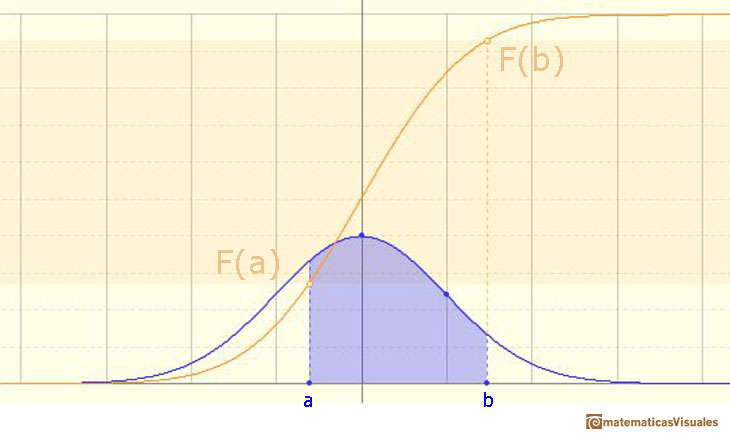
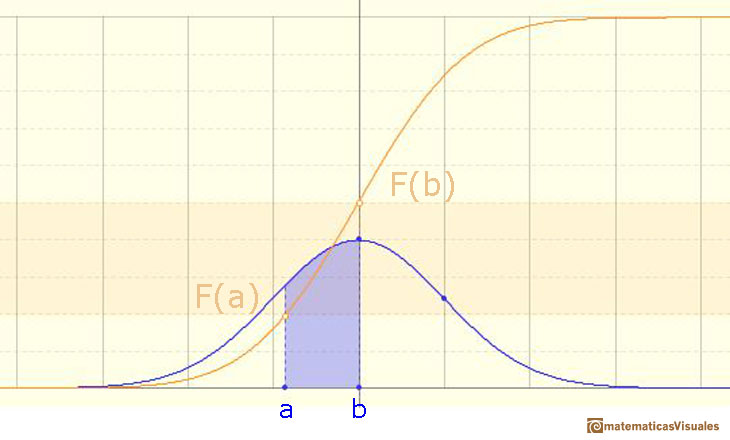
In this page we are going to study one simple and interesting case: symmetric intervals around the mean.
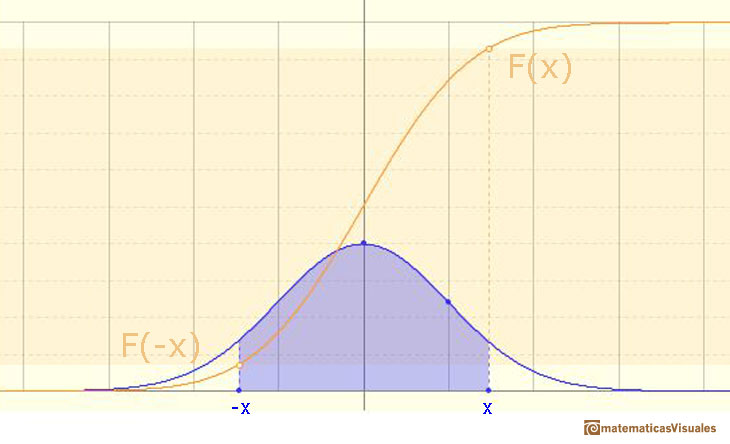
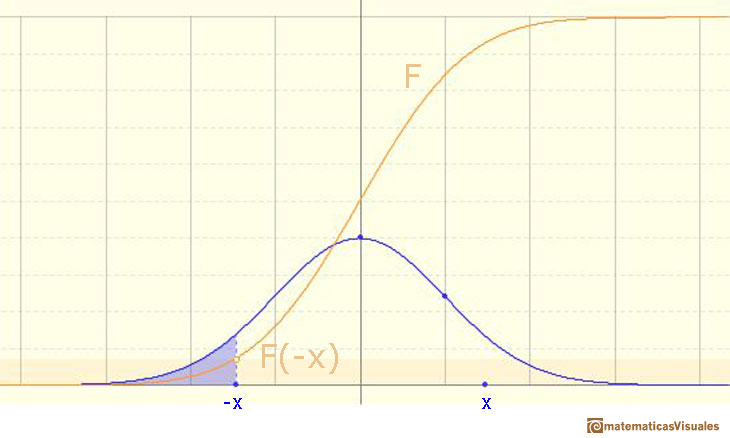
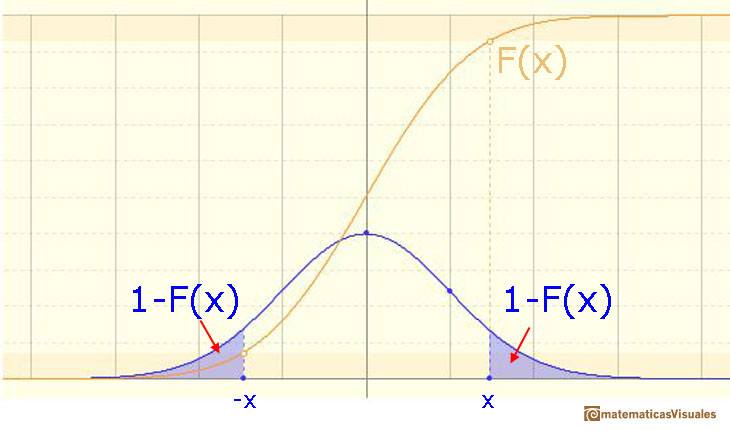
Then
We can modifying the parameters of the normal distribution.
The mean is represented by a triangle that can be seen as an equilibrium point. By dragging it we can modify the mean.
Dragging the point on the curve (which is one of the two inflexion points of the curve) we modify the standard deviation.
Moving the blue point on the X-axis we can change the symmetric interval.
We can see the cumulative distribution function and how it change by modifiyng the mean (simple translation) and the standard deviation (reflecting greater or lesser dispersion of the variable).
The red dots control the vertical and horizontal scales of the graphic.
REFERENCES
 NEXT
NEXT
 PREVIOUS
PREVIOUS
MORE LINKS



















